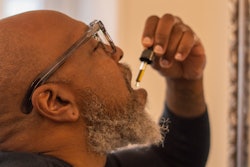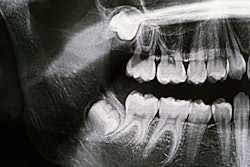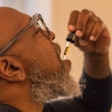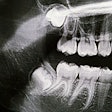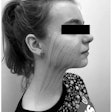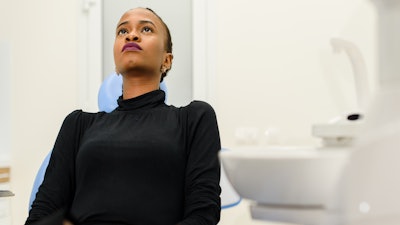
Wearing glasses with green lenses for 10 minutes prior to third-molar surgery may reduce the dental anxiety and heart rate of patients, according to a study published on March 21 in the Journal of the American Dental Association.
Continuing to wear the glasses during the procedure may reduce intraoperative pain, the authors wrote.
"By means of using glasses with green lenses throughout the procedure, existing anxiety and pain can be reduced," wrote the authors, led by Dr. Gökhan Gürses, PhD, an assistant professor in the oral and maxillofacial surgery department at Selçuk University in Turkey.
Currently, there is no dependable, universally acceptable strategy for decreasing dental anxiety. Though medications are an option, they come with risks. Therefore, finding a reliable, nonpharmacological approach would be ideal.
Furthermore, research has shown that green has been associated with a reduction in anxiety, pain, and depression. Some studies have shown that green spaces, like forests, may reduce anxiety and depression. Also, green light exposure has been shown to reduce pain and boost quality of life in patients with migraines and fibromyalgia, according to the study.
To determine the effectiveness of wearing glasses with green lenses before and during wisdom teeth surgery, a randomized parallel group clinical trial included 128 people. The visual analog scale (VAS) was used to measure dental anxiety and a State-Trait Anxiety Inventory (STAI-S) was used for baseline measurement purposes. Also, patients' blood pressure, oxygen saturation, and heart rate values were recorded.
Patients were given glasses with clear or green lenses, depending on their group. After 10 minutes, all parameters were measured again for preoperative measurement. Additionally, they wore glasses with green or clear lenses throughout the operation. After the operation, patients were asked about their intraoperative pain using the VAS, according to the study.
Between baseline and preoperative measurements, a statistically significant difference in anxiety and heart rate was found in patients who wore the green-lensed glasses for 10 minutes prior to surgery. Improvement in patients' anxiety was based on the dental anxiety score (-10.39 [95% confidence interval [CI], -12.99 to -7.79] versus 3.69 [95% CI, 1.65 to 5.73]); state anxiety level based on STAI-S (-8.16 [95% CI, -10.11 to -6.09] versus 1.27 [95% CI, -0.78 to 3.31]; p < .001), and heart rate (-6.17 [95% CI, -8.22 to -4.13] versus -1.95 [95% CI, -4.79 to 0.88]), the authors wrote.
Compared to those who wore clear glasses during surgery, the mean intraoperative pain score was statistically lower in patients who wore glasses with green lenses (29.84 [16.69] versus 36.14 [18.41]; t test, 2.03; p = .045).
However, the study had limitations, including how exposure to green can influence biochemical effects like cortisol levels, the authors wrote. In the future, more studies should be done to determine the specific anxiety and pain reducing effects of being exposed to green, they wrote.
"If more studies support the efficacy of exposure to green on DA (dental anxiety), manufacturing disposable green contact lenses could be considered," Gürses and colleagues wrote.





